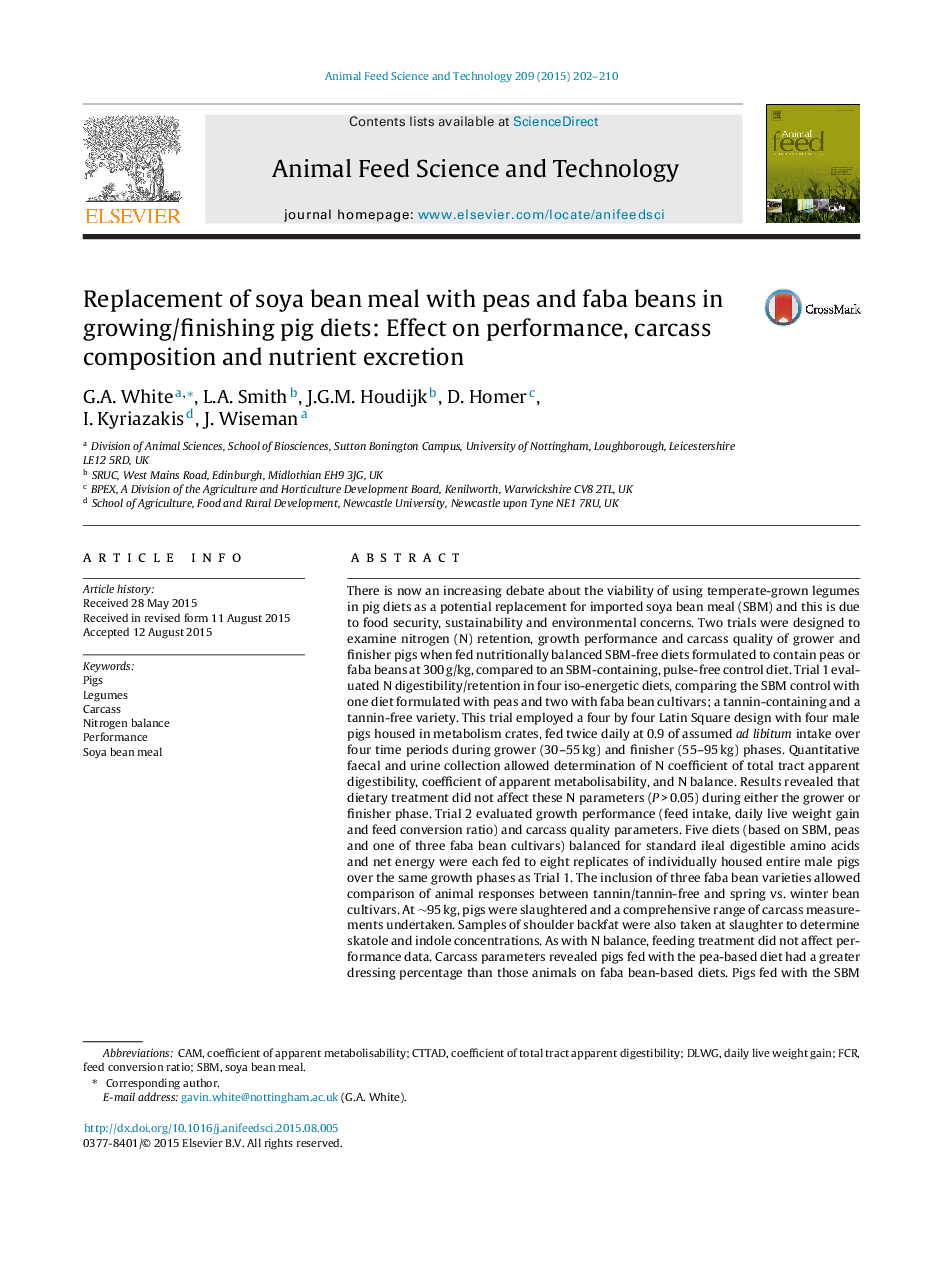| Article ID | Journal | Published Year | Pages | File Type |
|---|---|---|---|---|
| 2419385 | Animal Feed Science and Technology | 2015 | 9 Pages |
•Peas and faba beans can be a potential alternative to SBM in balanced pig diets.•Carcass composition is not different for pigs fed pea or faba bean diets or SBM.•Balanced pea and faba bean diets can deliver acceptable growth performance in pigs.•Nitrogen balance and faecal DM are not different for pigs fed SBM or legume diets.
There is now an increasing debate about the viability of using temperate-grown legumes in pig diets as a potential replacement for imported soya bean meal (SBM) and this is due to food security, sustainability and environmental concerns. Two trials were designed to examine nitrogen (N) retention, growth performance and carcass quality of grower and finisher pigs when fed nutritionally balanced SBM-free diets formulated to contain peas or faba beans at 300 g/kg, compared to an SBM-containing, pulse-free control diet. Trial 1 evaluated N digestibility/retention in four iso-energetic diets, comparing the SBM control with one diet formulated with peas and two with faba bean cultivars; a tannin-containing and a tannin-free variety. This trial employed a four by four Latin Square design with four male pigs housed in metabolism crates, fed twice daily at 0.9 of assumed ad libitum intake over four time periods during grower (30–55 kg) and finisher (55–95 kg) phases. Quantitative faecal and urine collection allowed determination of N coefficient of total tract apparent digestibility, coefficient of apparent metabolisability, and N balance. Results revealed that dietary treatment did not affect these N parameters (P > 0.05) during either the grower or finisher phase. Trial 2 evaluated growth performance (feed intake, daily live weight gain and feed conversion ratio) and carcass quality parameters. Five diets (based on SBM, peas and one of three faba bean cultivars) balanced for standard ileal digestible amino acids and net energy were each fed to eight replicates of individually housed entire male pigs over the same growth phases as Trial 1. The inclusion of three faba bean varieties allowed comparison of animal responses between tannin/tannin-free and spring vs. winter bean cultivars. At ∼95 kg, pigs were slaughtered and a comprehensive range of carcass measurements undertaken. Samples of shoulder backfat were also taken at slaughter to determine skatole and indole concentrations. As with N balance, feeding treatment did not affect performance data. Carcass parameters revealed pigs fed with the pea-based diet had a greater dressing percentage than those animals on faba bean-based diets. Pigs fed with the SBM or pea-based diets also had greater lean meat percentages than those on faba-bean diets. Mean skatole concentrations for all pigs were below the accepted maximum threshold level of 0.2 μg/g. In conclusion, it is suggested that peas and faba beans can be successfully fed in balanced pig diets throughout the grower/finisher periods as alternatives to SBM.
